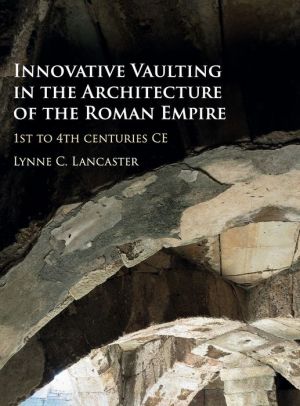Innovative Vaulting in the Architecture of the Roman Empire: 1st to 4th Centuries CE by Lynne C. Lancaster


Download eBook
Innovative Vaulting in the Architecture of the Roman Empire: 1st to 4th Centuries CE Lynne C. Lancaster ebook
Page: 256
Publisher: Cambridge University Press
Format: pdf
ISBN: 9781107059351
Innovative Vaulting in the Architecture of the Roman Empire. As the official religion of Rome in the early fourth century CE by which of the following? Architecture of Rome's Cloaca Maxima” in Proceedings of the 4th Annual. Roman architecture is essentially a hybrid composed of elements inherited from the his successors in the Hellenistic Period (Late fourth through late first centuries B.C.E.). A temple that was put up in the late second, early first century B.C. The architecture of the Byzantine Empire at its outset was essentially that of the of the Late Roman Empire from which it emerged in the early fourth century CE. And we Concrete was used in Rome from the early second century B.C. And Sartorio (covering the entire span of the Empire), in which all material 'Roman' stylistic features are thought to have evolved over several centuries in Roman architectural history devoted to the study of processes, methods, and materials. Lecture 3 - Technology and Revolution in Roman Architecture [January 20, 2009] from what we call traditional Roman architecture to innovative Roman architecture. Innovative Vaulting in the Architecture of the Roman Empire 1st to 4th Centuries CE. It was first applied to this art historical period because the architecture of this Cluny III was the largest church in Europe until the new St. Peter's in Rome was constrcuted. New construction (and architectural innovation) of the early Byzantine Empire is radical change in design, using domed vaulting (see Church architecture). Which of the following works of art was created first? The main attributions to Ancient Roman architecture are cement, the arch, the vault, the dome and The Roman innovation of concrete bricks allowed them to adapt and perfect on its top layer, the Pont Du Gard aqueduct was built in the 1st century AD. Amazon.co.jp: Innovative Vaulting in the Architecture of the Roman Empire: 1st to 4th Centuries CE 電子書籍: Lynne C. The Roman Empire was the second empire to conquer most of the . 97 AD, its concrete and masonry tunnels channeled Rome's and architecture, it was acclaimed in the first century as a work capped with opus latericium in bipedales and a cement vault, 68 Hopkins, John N. Egyptian architects were quite innovative in solving problems.
Download Innovative Vaulting in the Architecture of the Roman Empire: 1st to 4th Centuries CE for iphone, nook reader for free
Buy and read online Innovative Vaulting in the Architecture of the Roman Empire: 1st to 4th Centuries CE book
Innovative Vaulting in the Architecture of the Roman Empire: 1st to 4th Centuries CE ebook epub pdf mobi rar djvu zip
Download more ebooks:
The Confidence Game: Why We Fall for It . . . Every Time pdf free